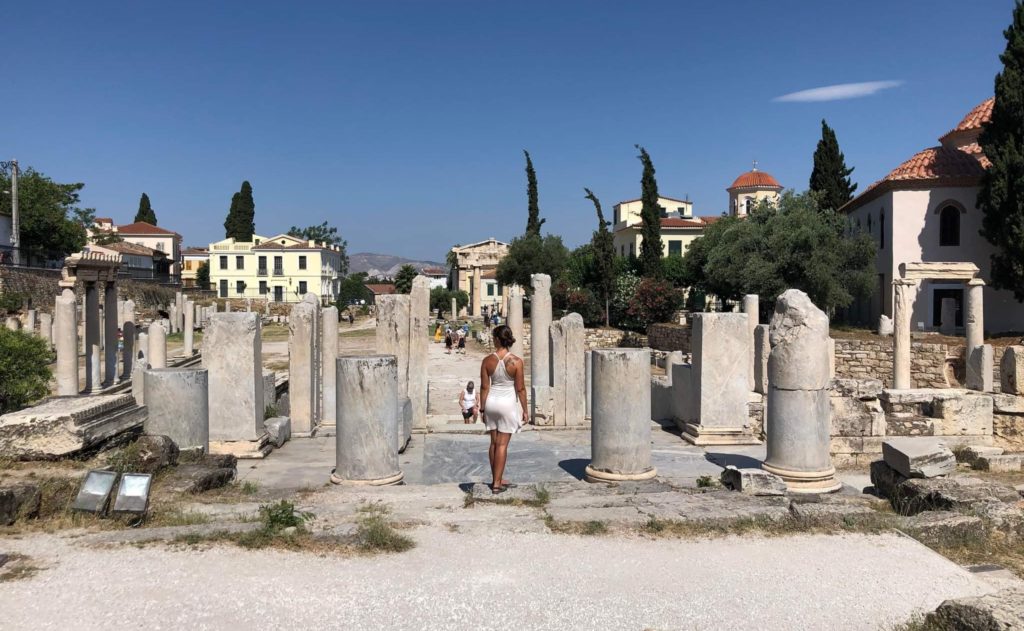
My previous post was all about the Greek islands. However, while planning the trip, mainland Greece was actually more exciting to me. I wanted to see the islands, of course, but the history of Athens originally drew my attention to Greece.
I remember wanting to visit Greece since learning about Greek mythology as a kid. In high school, history and philosophy classes reinforced my desire to visit Greece, especially Athens.
While researching the trip, though, I learned that a lot of people don’t especially like Athens. People on the internet complain about it being dirty and crowded. I tend to like a lot of European cities of which other people speak poorly, so I wasn’t too concerned.
Because we only had about a week to spend in Greece, we were only able to spend two full days in Athens. But it ended up being one of our favorite stops on our trip, and here’s why.
Ancient Ruins Against a Modern City
Athens is famous for sites from Ancient Greece like the Parthenon. They are awesome to see on their own, but one of the coolest parts of Athens is the juxtaposition of these ancient ruins right in the middle of a bustling, modern city. As soon as we stepped out of the Monastiraki metro station, we were in the middle of a city square, and right above us was the Acropolis.
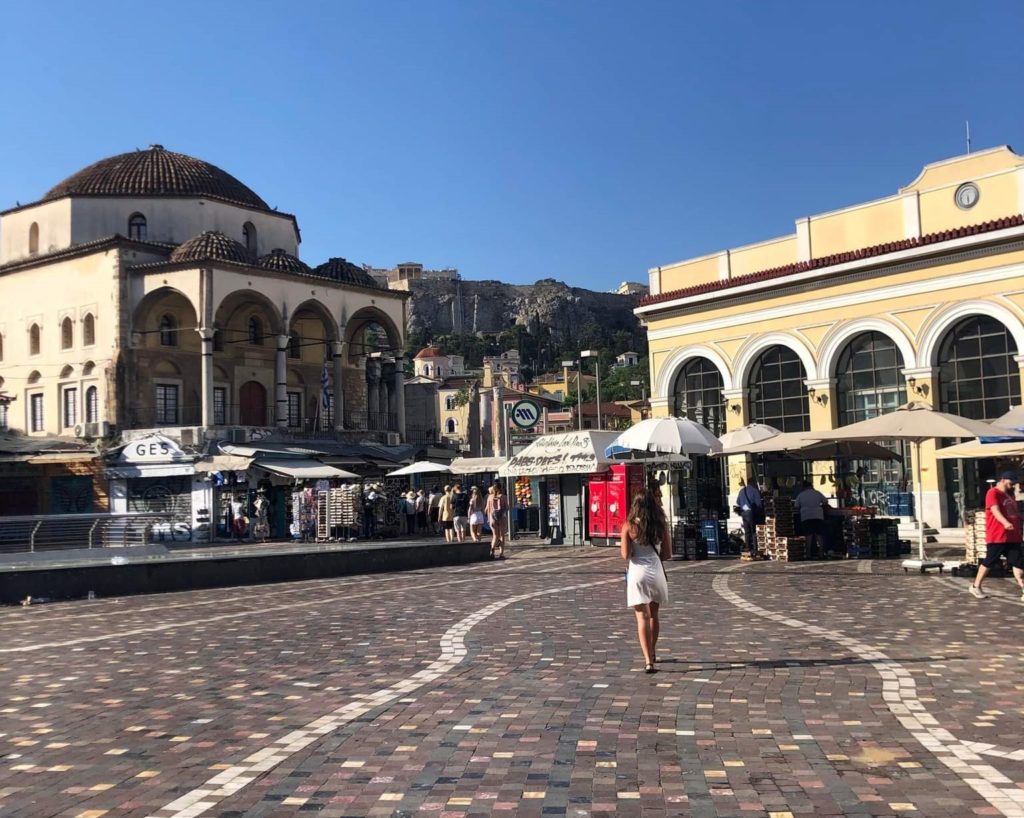
The Acropolis is actually on top of the second tallest hill in Athens, so you can see it from multiple points in the city. In Athens, you can also buy a combo ticket for admission into the Acropolis and six other archaeological sites. These sites are also in the middle of the city and incredibly easy to access.
While the Acropolis is definitely incredible to see, my favorite site was the Ancient Agora. It was once a large town square where people came to shop, watch performances, listen to philosophers like Plato and more. The Ancient Agora also holds the Temple of Hephaestus, the Greek god of craftsmanship. I also enjoyed seeing the other five sites on the combo ticket, but I could have spent another 1-2 hours in the Ancient Agora.
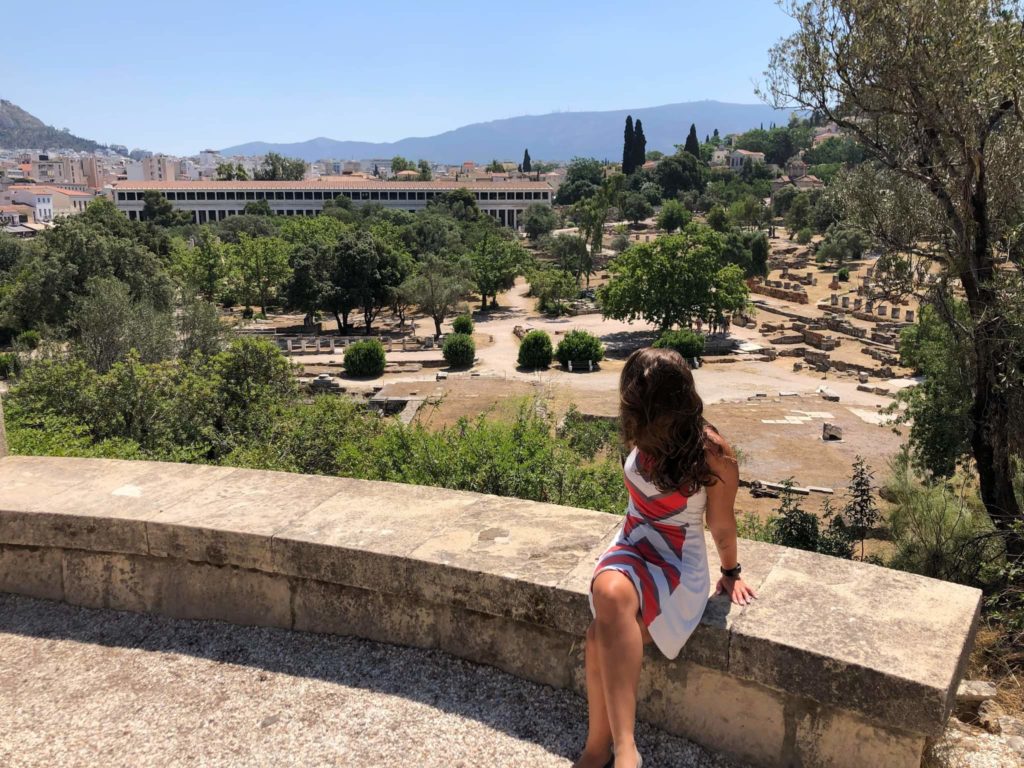
The area of the city where we stayed also felt like such a stark contrast to visiting the archaeological sites. We stayed in Monastiraki, which had such a quirky, energetic vibe. Street art covered the entire neighborhood, and it had a ton of bars, restaurants and gelato shops. It is also connected to a major metro stop and just about a 20-minute walk to the Acropolis and other famous sites.
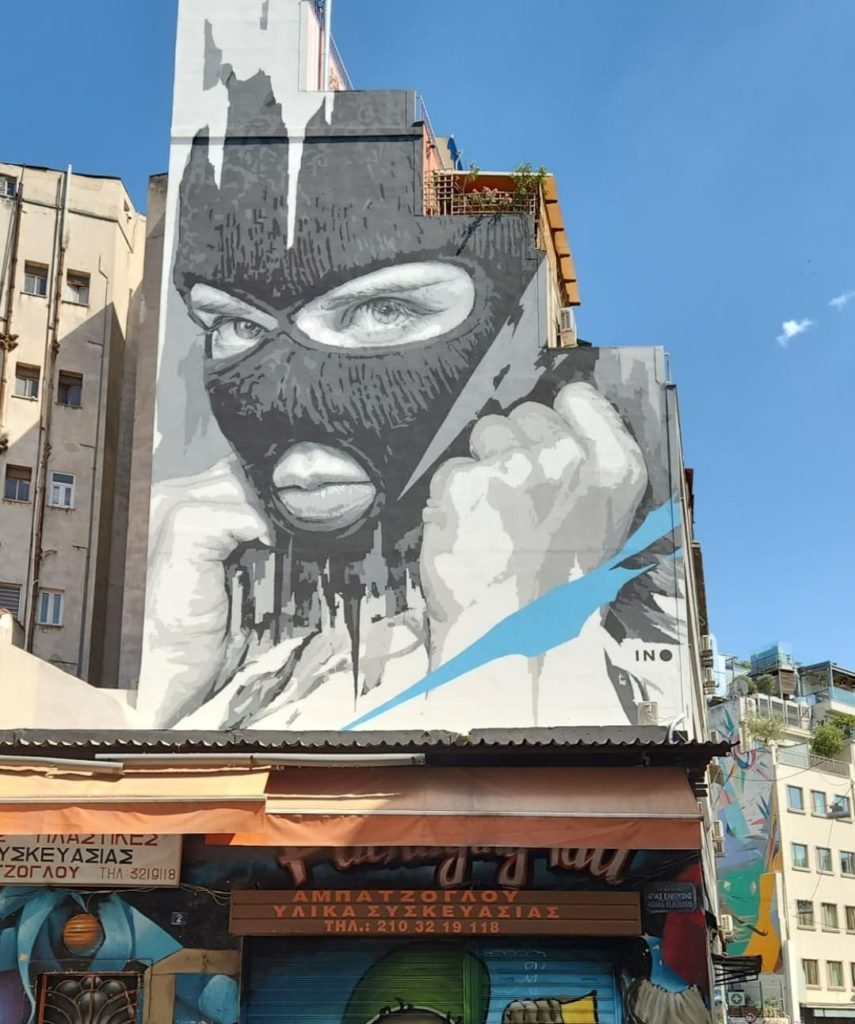
Lookout Points
Athens also has some incredible view points where you can look out over the sprawling city. If you go up to the Acropolis, you’ll already be on the second-highest hill in Athens. The Acropolis has stunning views. If you don’t have time to visit other view points, you’ll still get panoramic views of the city just by visiting this site.
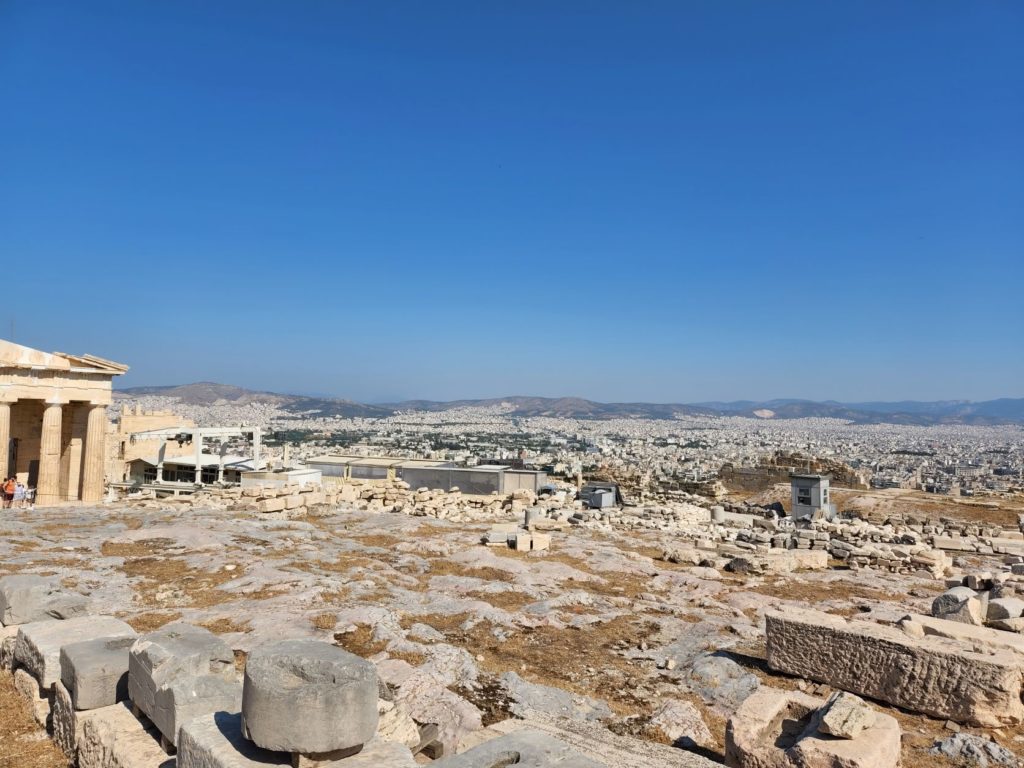
Right outside the exit of the Acropolis is Aeropagus hill. This hill is a rocky outcropping overlooking Athens. In classical times, it was most likely used to host councils for homicide rulings. Nowadays, it is a popular place to look out over Athens and maybe watch the sunset.
As I mentioned, the Acropolis is on the second-highest hill in Athens. The highest point in Athens is Lycabettus Hill, and you will also see it from several points in the city, including the Acropolis. This hill is the place to go if you want to truly see the full sprawl of the city. A small church and restaurant are also at the top of the hill. There is a cable car you can take to the top, but we chose to climb it. There is an easy path that leads up to the top of Lycabettus Hill and takes ~30 minute to walk.
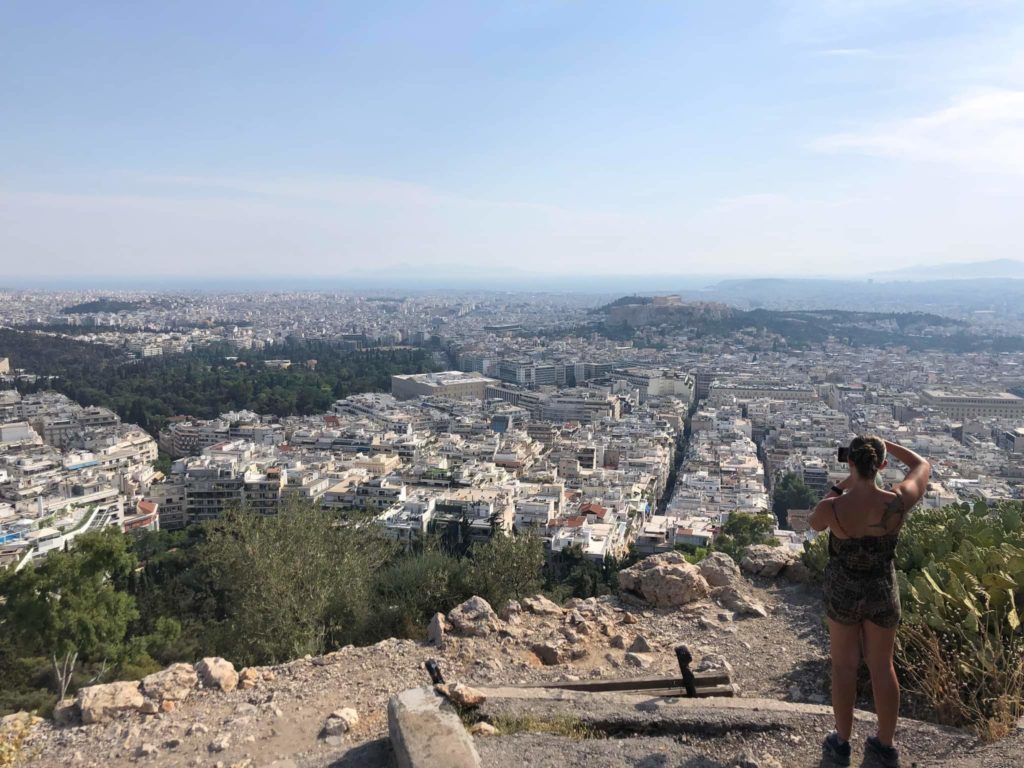
Food (Gyros)
In Naxos, we ate at a lot of nicer sit-down restaurants and fully enjoyed the local cuisine of the island. By the time we got to Athens, we were ready to eat some more basic Greek food, namely gyros.
We ate gyros and/or kebabs from small restaurants and food stands in our neighborhood for every lunch and dinner. Our favorite gyro came from a small restaurant called Tylixto Greek Wrap. It had everything you want in a gyro – soft pita, flavorful meat and mushy french fries.
This gyro spot was also next to two great dessert places in Monastiraki. Melt is a homemade gelato and pastry shop that has the creamiest gelato made of delicious local flavors. I had a double scoop of rose and mastic-flavored gelato. Mastic is a flavor made with the sap of the mastic tree, which grows on Chios island. The flavor was slightly floral and went very well with the rose gelato.

Lukumades is also an Athens dessert. They are fried dough balls covered in sweets. We got some from a shop named for the dessert (Lukumades) next to Tylixto. We got doughnuts both with just honey and sugar and others covered in chocolate. However, the dough balls themselves were not too sweet, which made the sweet toppings stand out without overwhelming.
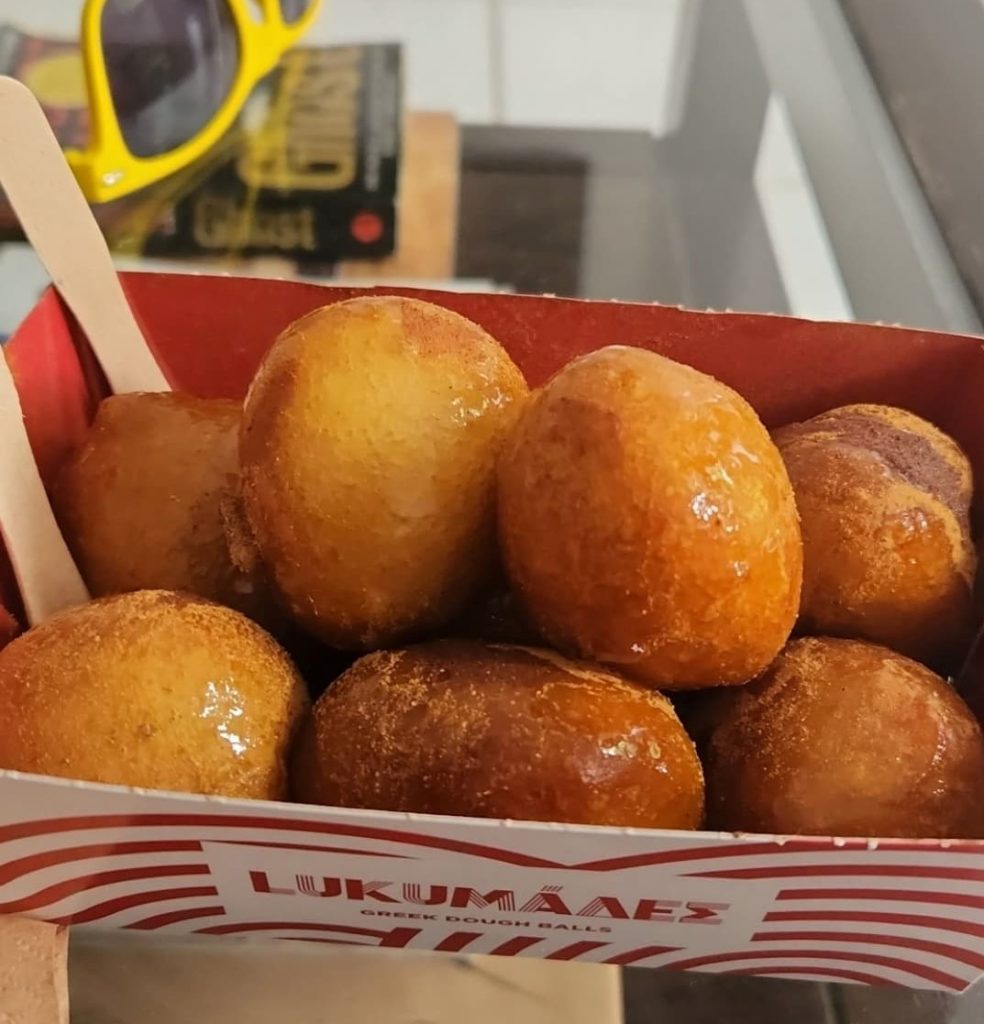
In Summary:
I loved Athens, and it’s a place to which I definitely want to return. Because I was only able to be there for a couple of days, I only was able to see the main highlights and eat gyros. I look forward to returning to see more of the city and possibly taking popular day trips to places like Meteorea and the Temple of Poseidon.
Logistics:
Where to stay:
The two most popular neighborhoods to stay in Athens are Monastiraki and Plaka. These are popular for their proximity to major sites like the Acropolis and metro stations. We stayed in Monastiraki and loved the vibe of the neighborhood. However, there are a lot of bars here that stay open until 3 a.m. and can be pretty noisy. If you’re sensitive to noise, it may be better to stay in a quieter neighborhood. Plaka neighbors Monastiraki and is a slightly nicer neighborhood.
Koukaki and Psyrri are also good choices for neighborhoods. Psyrri is more of a hipster neighborhood and a nightlife hub of the city, whereas Koukaki may be better for families.
Getting Around:
Athens has a good metro system that can take you to different places in the city, including to and from the port or airport to wherever you’re staying.
Aside from arriving and leaving, we walked everywhere in the city. The main sites in Athens are all pretty near one another. There are also taxis and Uber in Athens.
When to visit:
The most popular times to visit Greece are July and August, with a shoulder season in May/June and September/October. We visited in early June. By then, it was already pretty crowded and very hot. Temperatures climbed into the mid-90s (mid-30s Celsius) each day, and we took siestas in the afternoon. If you’re visiting in the summer, make sure to bring plenty of water when walking around the city.
Safety:
Athens is considered very safe for a large city. However, beware of pickpockets in crowded areas, and don’t carry your phone or wallet in your back pocket. There are also scams here common in other large European cities. One that I saw was men with threads that try to force bracelets around your wrist then demand payment. If you see these large men with colorful threads, make sure you avoid walking near them.
Miscellaneous Tips:
The combo ticket for the archaeological sites is worth buying if you want to see multiple sites. It costs about $35 USD, and you can entire each site once over seven days.
You can’t flush toilet paper down the toilet in Athens (or Naxos)! Everything goes in the trash can.
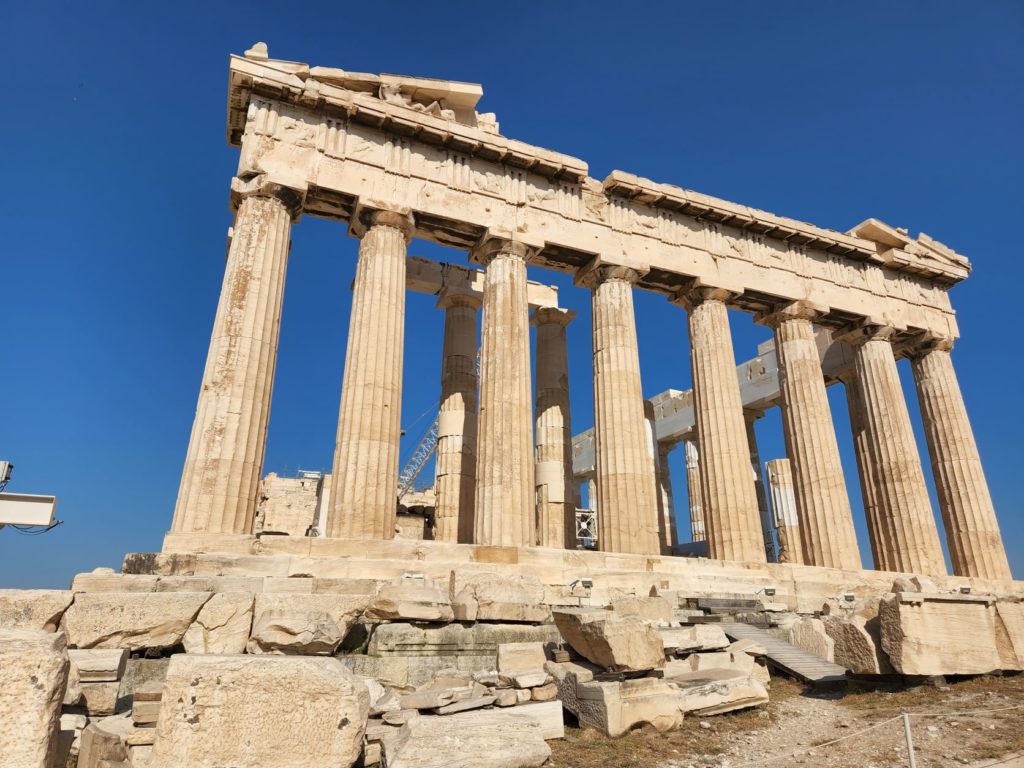

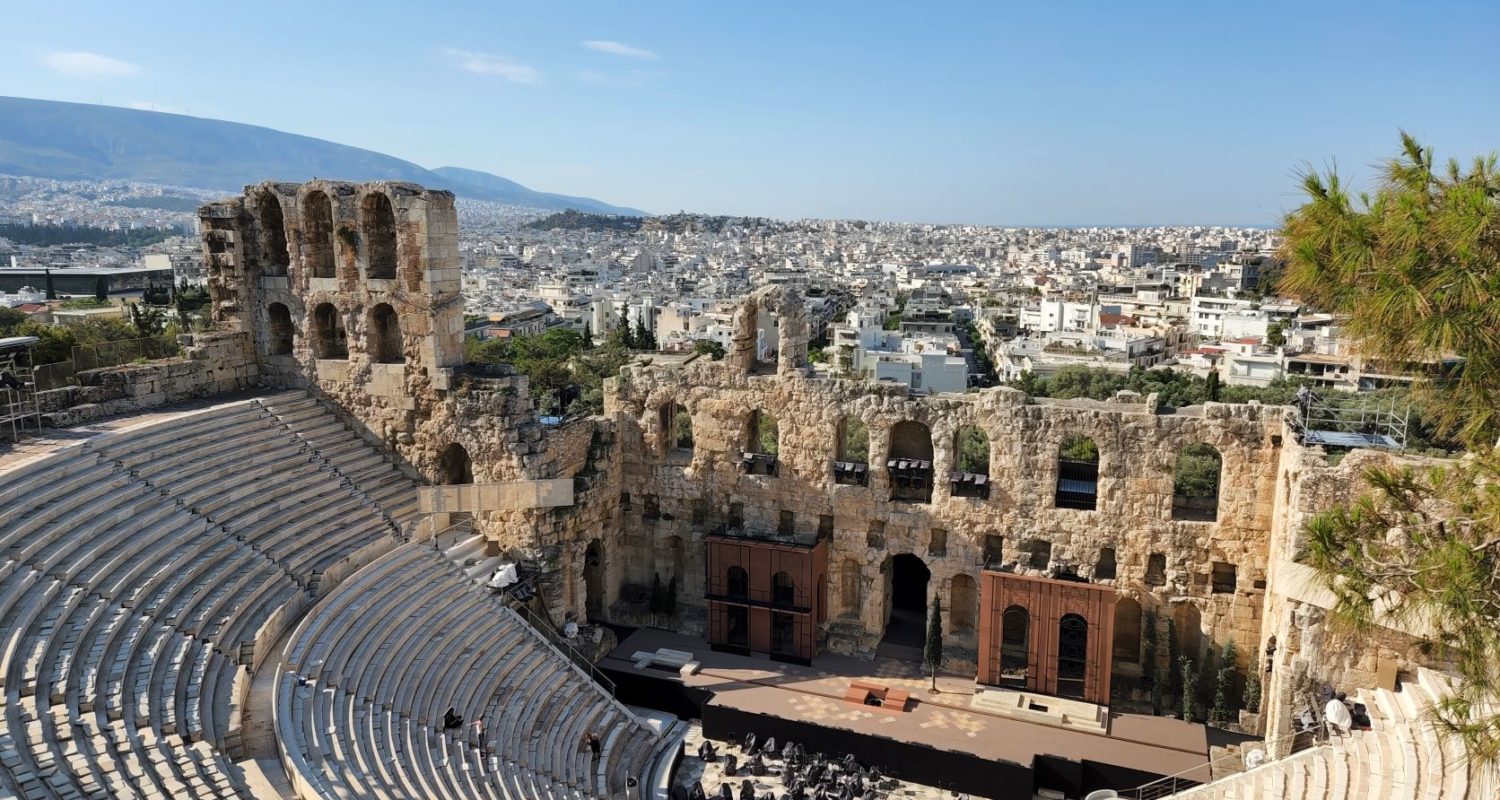


One thought on “Athens: What I Loved About Greece’s Largest City”